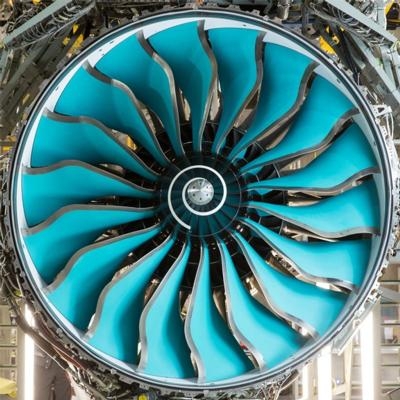Sun, Mar 02, 2014
Looks To Build On The Success Of The Trent Family
Rolls-Royce has shared details of its next generation of engine designs, which could be ready within ten years, featuring technology innovation designed to transform performance. The company has built a technology leadership position with its Trent family of engines, the latest of which, the Trent XWB, the company says is the most efficient engine flying today. Trent engines will continue in service for decades to come with 2,500 in service and more than 2,500 on order.

Rolls-Royce is continually innovating and, as part of that ongoing process, is looking to build on the success of the Trent family of engines with two new generation engine designs.
The first design, Advance, will offer at least 20 per cent better fuel burn and CO2 emissions than the first generation of Trent engine and could be ready from the end of this decade.
The second, UltraFan, a geared design with a variable pitch fan system, is based on technology that could be ready for service from 2025 and will offer at least 25 per cent improvement in fuel burn and emissions against the same baseline.
"These new designs are the result of implementing our ongoing technology programs," said Colin Smith, Rolls-Royce Director - Engineering and Technology. "They are designed to deliver what our airframe and airline customers tell us they need: even better fuel efficiency, reliability and environmental performance."
Both engine designs are the result of the ongoing research and development investment, of approximately £1 billion (approx. $1.67 billion) a year, which Rolls-Royce makes across its aerospace and non-aerospace businesses.
The designs will feature architecture and technology improvements, all currently at an advanced stage of development, that include:
- A new engine core architecture - to deliver maximum fuel burn efficiency and low emissions.
- A CTi Fan System - carbon/titanium fan blades and a composite casing that reduce weight by up to 1,500lb per aircraft, the equivalent of carrying seven more passengers at no cost
- Advanced ceramic matrix composites - heat resistant components that operate more effectively in high turbine temperatures.
- A geared design, called UltraFan, which will deliver efficient power for high-thrust, high-bypass ratio engines of the future.
(Image provided by Rolls-Royce)
More News
With Testing Soon Complete, Launch Preparations Begin in Earnest Sierra Space's Dream Chaser has been put through the wringer at NASA's Glenn Armstrong Test Facility in Ohio, but w>[...]
Takeoff Roll The process whereby an aircraft is aligned with the runway centerline and the aircraft is moving with the intent to take off. For helicopters, this pertains to the act>[...]
“We’re proud of the hard work that went into receiving this validation, and it will be a welcome relief to our customers in the European Union. We couldn’t be mor>[...]
"Aircraft Spruce is pleased to announce the acquisition of the parts distribution operations of Wag-Aero. Wag-Aero was founded in the 1960’s by Dick and Bobbie Wagner in the >[...]
IDENT Feature The special feature in the Air Traffic Control Radar Beacon System (ATCRBS) equipment. It is used to immediately distinguish one displayed beacon target from other be>[...]
 Sierra Space Repositions Dream Chaser for First Mission
Sierra Space Repositions Dream Chaser for First Mission ANN's Daily Aero-Term (05.10.24): Takeoff Roll
ANN's Daily Aero-Term (05.10.24): Takeoff Roll Aero-News: Quote of the Day (05.10.24)
Aero-News: Quote of the Day (05.10.24) Aero-News: Quote of the Day (05.11.24)
Aero-News: Quote of the Day (05.11.24) ANN's Daily Aero-Term (05.11.24): IDENT Feature
ANN's Daily Aero-Term (05.11.24): IDENT Feature



